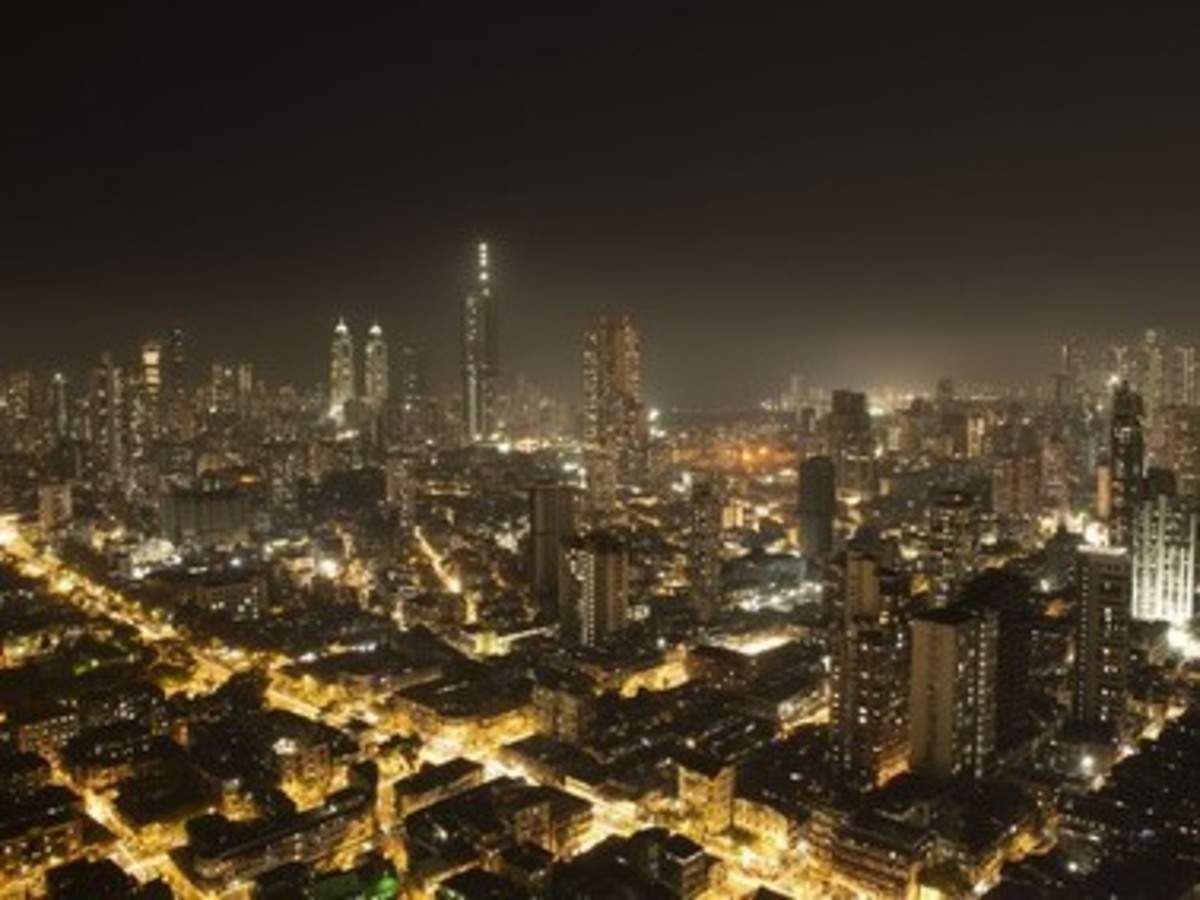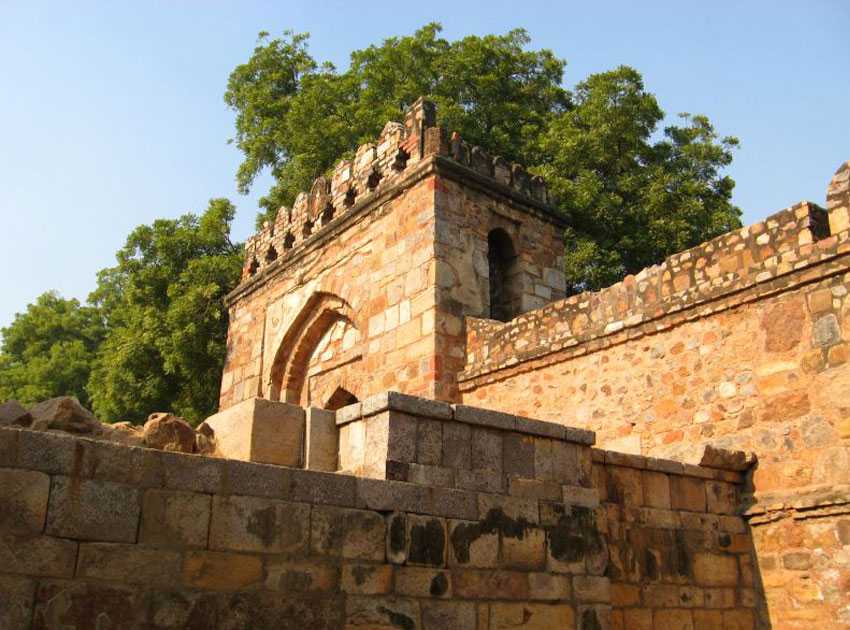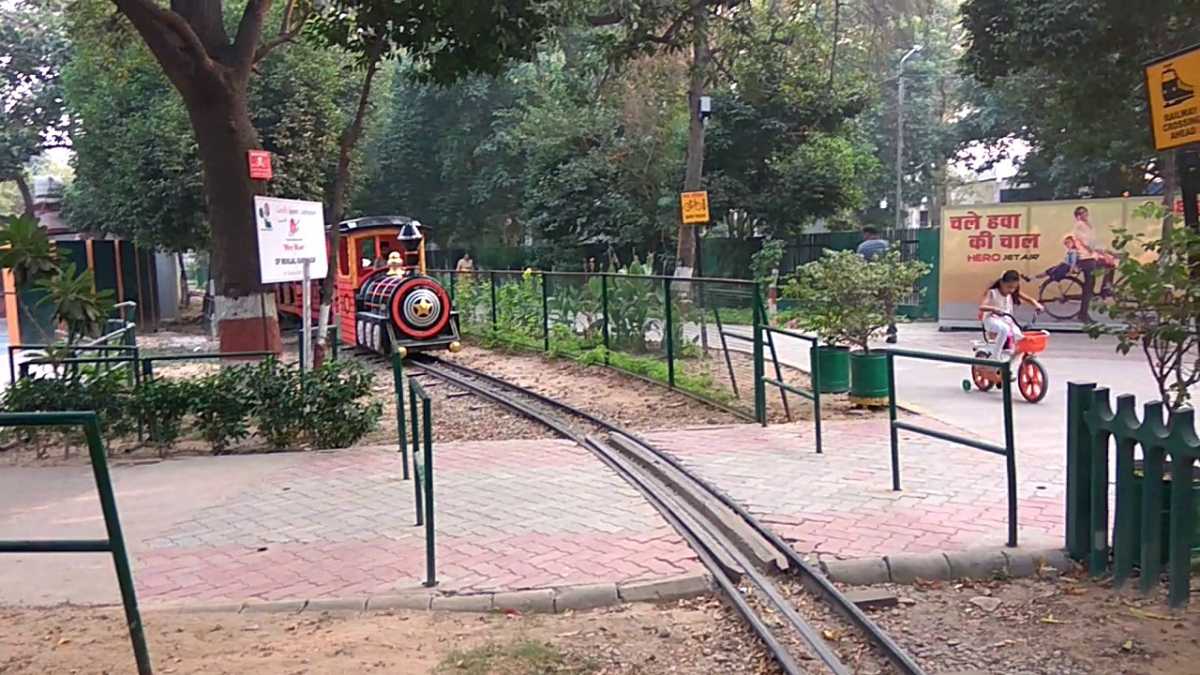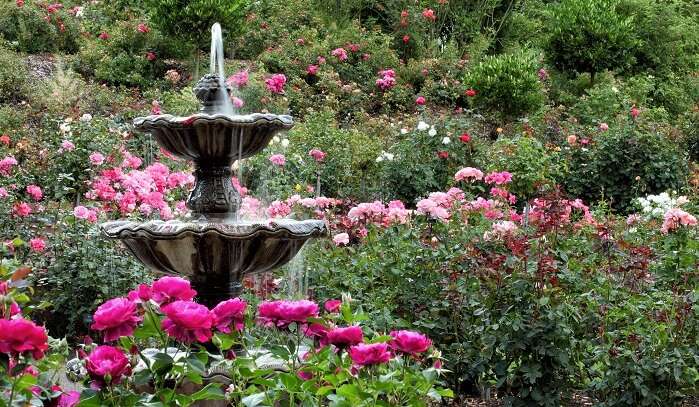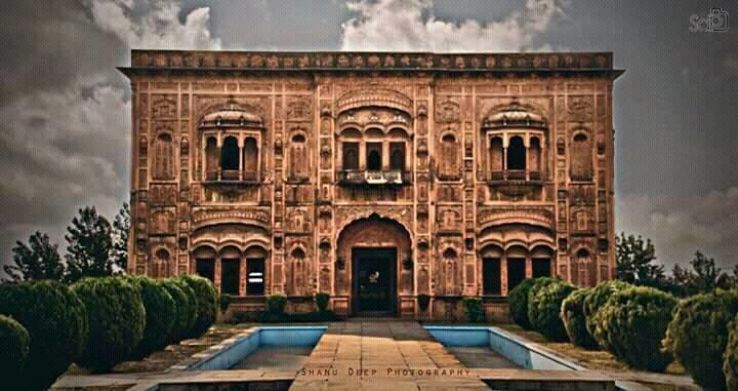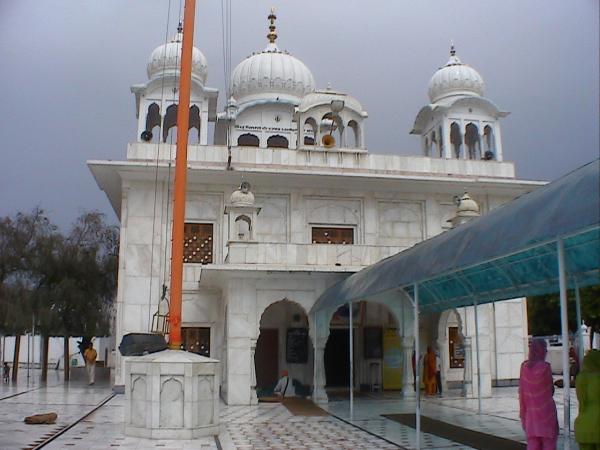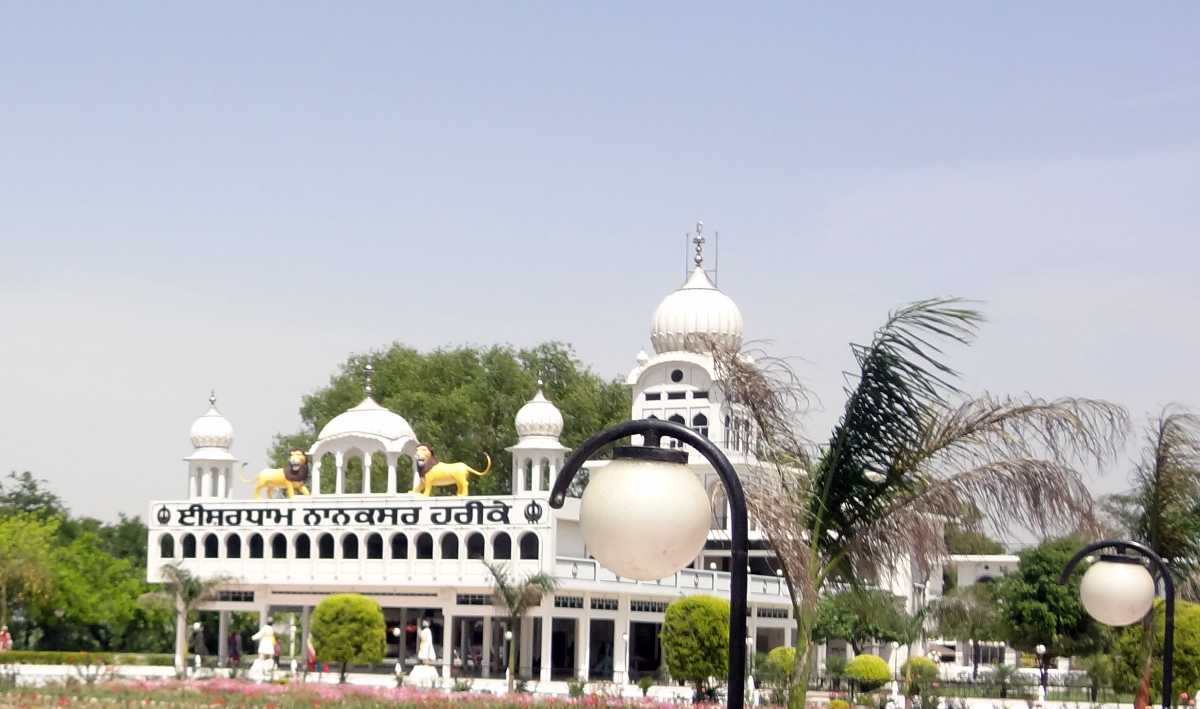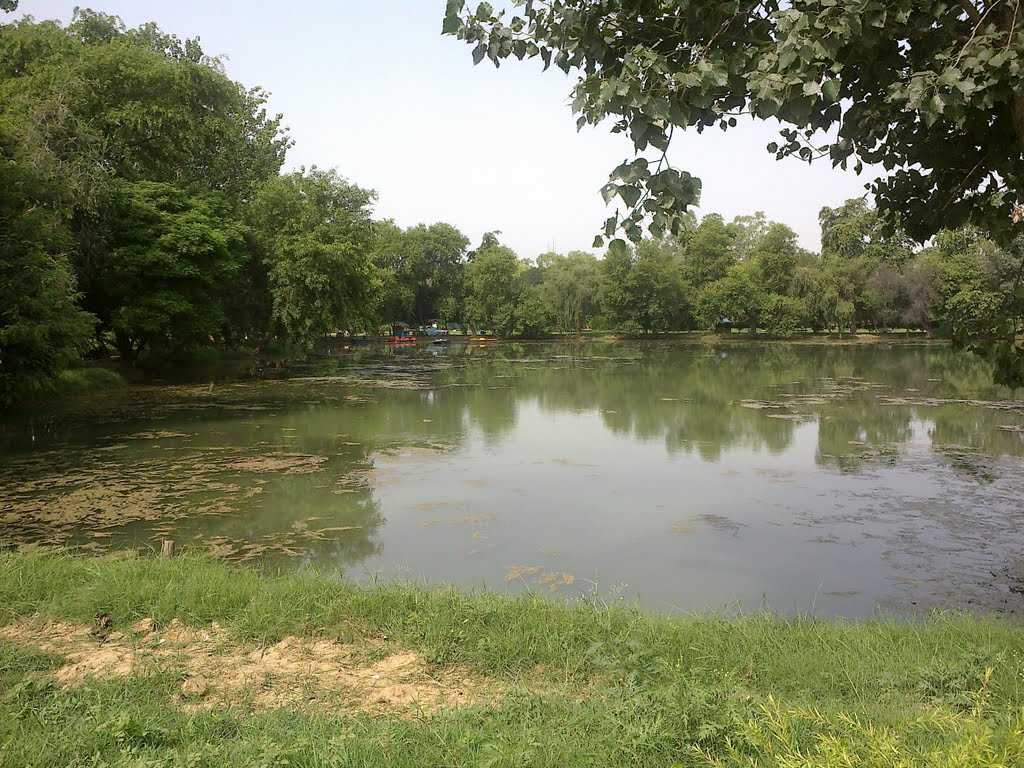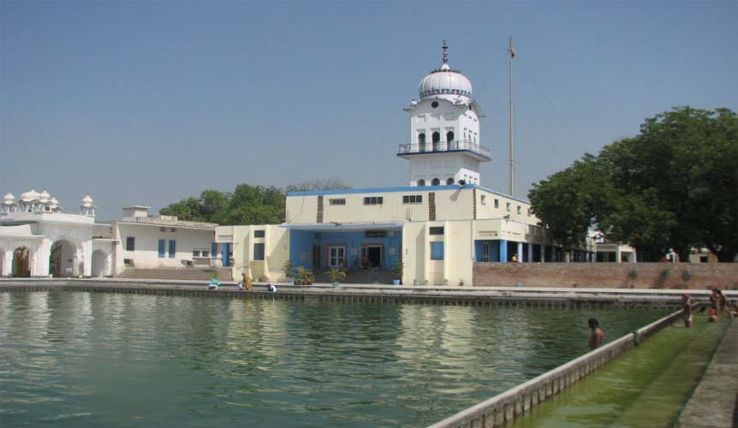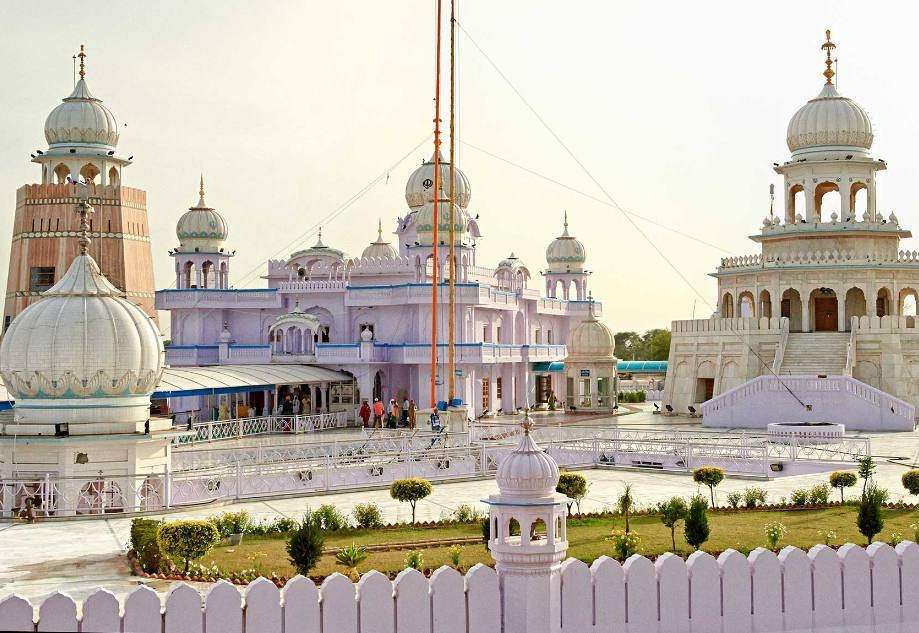After Patiala, let us travel about 100 km further westwards and slightly north to the city of Ludhiana and then southwest about 150 km from Ludhiana to the city of Bhatinda in this blog post.
Ludhiana
Punjab’s largest city and the largest city north of Delhi, Ludhiana has an area of 311 sq. km and stands on the Sutlej River’s old bank, which is about 13 km south of its present course. Often referred to as India’s Manchester City, the city is an industrial centre of northern India. Ludhiana has also been ranked as the easiest city in India for business according to the World Bank and is home to the Punjab Agricultural University, the largest agricultural university in Asia. Over the years, Ludhiana has established itself as a major trade hub in Northern India due to the presence of industries such as textile manufacturing, cycle parts, and steel.
A city dominated by the small scale industries producing industrial goods, machine parts, auto parts, household appliances, hosiery, apparel, and garments, Ludhiana is Asia’s largest hub for bicycle manufacturing and produces more than 50% of India’s bicycle production of more than 10 million each year. Ludhiana produces 60% of India’s tractor parts and a large portion of auto and two-wheeler parts. Many parts used in German cars such as Mercedes and BMW are exclusively produced in Ludhiana to satisfy the world requirement and it is one of the largest manufacturers of domestic sewing machines. Hand tools and industrial equipment are other specialties of the city.
The apparel industry of Ludhiana, popularly known as Ludhiana Hosiery industry provides employment to millions of people and produces India’s largest share of winter clothing. It is especially known for its woollen sweaters and cotton T-shirts with the majority of India’s woollen clothing brands being based here. Ludhiana is also famous for its industry of shawls and stoles and satisfies the demand of major domestic and international brands, which is why it is often dubbed as the Manchester of India. Ludhiana also has a growing IT sector with multiple software services and product companies having development centres in the city.
Ludhiana gets its name from the Lodhi Dynasty, which is believed to have founded the city in 1480. During the reign of the Mughal emperor Akbar the area formed part of the Sarkar of Sirhind. Chakar, Talwandi Rai in 1478 AD, Raikot in 1648 AD and Jagraon in 1688 AD were founded by the Rai family of Raikot. In the latter period of Mughal rule the western part of the district was leased to the Rais of Raikot. By the early eighteenth century, they had become semi-independent of the Mughals. The villages in Ludhiana district remained independent and under the rule of local powerful village Sikh chieftains, from 1707 to 1835. In 1747 Ahmad Shah Durrani invaded and battled the imperial army near Khanna. Although the Mughals were able to stop Ahmad Shah, his subsequent invasions weakened the Mughals, which allowed the Rais to take control of Ludhiana town in 1760. During the reign of Maharaja Ranjit Singh, Ludhiana became an important British cantonment. Initially, in 1805, Ranjit Singh occupied Ludhiana. However, in 1809, the British decided to curb his advance eastward and sent troops to confront him. Ranjit Singh was forced to sign the treaty of ‘perpetual friendship’ with the British, which confined his activities to the right bank of the Sutlej. British troops were permanently stationed in Ludhiana and the Cis-Sutlej states came under British protection. There was also the battle of Saragarahi fought on 12 September 1897. In 1947 due to violence and strife between the communities, most of the Muslim population in the city left for Pakistan.
So what can we, as a tourist see and visit in this city?
Locally known as Purana Qila or Old Fort, Lodhi Fort was built by the Muslim ruler Sikander Lodhi around 500 years ago and is a grand structure which now lies in ruins due to poor maintenance. The fort stands on a large piece of land which has now been encroached from all sides. The fort was erected as a military castle to stop intruders from entering the city. What was once the gateway to Sikander Lodhi’s empire and the pride of Maharaja Ranjit Singh, now lies forgotten and in ruins. Surprisingly, a large percent of the local population is not even aware of the whereabouts of this fort. This majestic castle shows traces of its grand past, of its once beauty, great architecture, lush green landscapes, and a splendid view of the river Sutluj.
The 200-year old Phillaur Fort started life as a serai constructed by Sher Shah Suri at Phillaur, which was converted to a military fort and a post office by Shah Jahan and later used by the British as a part of the military camp. Designed by Dewan Mokham Chand, general of Maharaja Ranjit Singh, the magnificent Phillaur Fort has a distinct European architecture designed by the Maharaja’s Italian and French generals. It has an extensive moat and its outer walls were used for defence attack. This ancient fort is now being operated as a police training centre and as a fingerprint bureau.
With lush green landscapes and a toy train, the Rakh Bagh Park of Ludhiana is a hot local favourite spot for children, joggers and walkers. Revamped from the British Era the toy train is a children’s favourite and never ceases to grab the attention of the children as it rides around the park. For the morning and evening walkers there is a jogging track that encloses the park. The park is surrounded by tracks for bicycle riders and it houses exercising machines on the children’s play area. There are food joints in and around the park’s premises so the visitors can munch on refreshments and also a swimming pool for learners. Renovations, landscaping and beautifications are planned for the popular garden which is usually crowded throughout the day.
The Nehru Rose Garden is a beautifully landscaped garden in the heart of the city sprawling over an area of 27 acres, and home to over 17000 plants and 1600 varieties of roses. The vast lawns are the perfect picnic spot with water fountains around it. Every night the fountains are illuminated with colorful lights and music. This garden is one of the oldest and largest leisure spots in Ludhiana, established in the year 1967. The rose garden provides a space for jogging and walking track within the enclosure. Apart from the fountains and landscape, the garden holds a planetarium at its entrance, boat rides in the artificial pool and mini zoo. The annual rose festival, one of the most significant cultural events held every year, attract thousands of visitors around India.
Constructed by the Punjab government in 1999, the Maharaja Ranjit Singh War Museum pays homage to the brave soldiers and educate people about their role in the defence. Named after Maharaja Ranjit Singh, this museum has a statue of the king sitting on a throne at the entrance. The museum has more than twelve galleries with different sections for ancient history, post-independence, wars that India fought at its borders, war heroes, the Indian armed forces and is an extensive memoir of India’s past. Don’t forget to watch the light and sound show, which is organised every evening.
The Punjab Agriculture University Museum on the outskirts of Ludhiana, displays artifacts from the 18th and 19th centuries of life in rural Punjab. Also known locally as the Ajaib Ghar and opened in 1974, the museum is inspired by the open-air museum in Copenhagen. The museum houses various rural farming tools and several other artefacts and resembles the traditional houses in rural Punjab with long paths flanked by water channels on either side. The Museum is a hybrid of the agricultural and cultural portrayal of Punjab where one can visit the goat farm, cow farm, and horse farm. The museum depicts the rural life of Punjabis and showcases their culture in the form of household equipment used in the ancient time, pottery, coins, musical instruments, dress, jewellery, juttis (shoes), handicrafts, etc. The models of miniature mountains, rivers and water reservoirs are the crowd pleasers. The exhibit has a long path with water channels on both sides and a beautiful facade in its 4000 sq.ft of land. The 100-yard long path makes way to the etched wooden door of the museum with which holds the antique repertoire of the 18th century Punjab. This historic building houses a rare object made of six layers of camel skin. The culture of Punjab comes alive at the museum as it features traditional instruments like tumba, sarangi, vanjhili and nagara. Open daily from 9 am to 1 pm and then again from 2 to 4 pm, you will need around two to three hours to finish seeing this place. There is an entry fee of INR 10 per person for the museum.
The Gurudwara Charan Kanwal is located about 35 km from Ludhiana, in the village of Machhiwara. The serene ambiance and the beautiful aesthetic architecture of the Gurudwara attracts many tourists. Legend has it that when Aurangzeb’s army attacked, Guru Gobind Singh resisted their onslaught and escaped into the woods of Machhiwara. Here, he rested and slept under a tree where he recited ‘Mitar Pyare nu’. The old Jand tree is still preserved outside the Gurudwara. Daya Singh, Man Singh, and Dharam Singh were his three companions who found him at the site. The place he stepped on marks the site of Gurudwara Charan Kanwal, the feet of Guru Gobind Singh compared to a lotus flower. Every December, an annual congregation fair is held that marks the days of Guruji’s stay during the 9th and 10th of the Punjabi month of Poh the days Guruji stayed at Machhiwara which is also the best time to visit this Gurudwara.
Famous as the memoir of Guru Gobind Singh, the Gurudwara Nanaksar Jagraon is situated on the banks of Nanaksar Sarovar. In the year 1975, the Sikh Saint Baba along with his followers established the Gurudwara in Kaleran. A dominant feature of this shrine is the annual festival held every year for five days in August. It is attended by nearly one-lakh devotees. This beautifully structured edifice houses three separate shrines around its premises namely Gurdwara Sahib Patshahi Pehli, Gurdwara Sahib Patshahi Chhevin and Gurdwara Sahib Patshahi Dasvin. This six storied structure is beautifully architectured with large marble floors and a Sanctum. The nearby villages offer the Langar, a communal meal of Sikhs to the Gurdwara hence the place is not just known for its peace and solace but also brotherhood. The Prakash Divas of Guru Nanak Dev Ji, Guru Gobind Singh Ji, Guru Hargobind Ji and Shahidi Divas of Guru Arjan Dev Ji along with the Jor mela are the significant festivities that are celebrated with great pomp and enthusiasm from 13th-17th of January every year.
The village of Alamgir which is located about 10 km from the centre of Ludhiana is the location of the the Shri Manji Sahib Gurudwara, more commonly known as Alamgir Gurudwara. In 1761, Guru Gobind Singh reached Alamgir soon after the Mughals executed his mother and siblings. Upon arriving the village, it is reported that the Guru shot an arrow into the ground from which a spring appeared. A lady with leprosy who bathed in that spring was cured. Ever since then, the place is known as Tissar or Arrow Lake. It is prophesied that whoever visits the holy spring with faith will be cured of his worries and pain. The guru was also presented with a horse by a devoted follower. A prominent highlight of this place is the palanquin or Manji that carried the Guru to his place which is till date preserved in the Bhora Sahib or the underground shrine, hence the name Manji Sahib. The langar hall of Shri Manji Sahib is among the biggest langar halls of all the Sikh shrines with the capacity to serve hundreds of people for free in one go.

The Rara Sahib Gurudwara is visited by devotees from different parts of Punjab and outside the state. The Rara village was converted into Rara Sahib after the visit of the sixth Sikh Guru, Guru Hargobind-ji in the 17-century. And the Gurudwara was constructed in the 20-century with the visit of Sant Isher Singh-ji and Sant Kishan Singh-ji into this architectural beauty. One thing that attracts tourist to the Gurudwara is a continuous rendition of paath and kirtan day and night every single day without a break.
The Pir-I-Dastgir Shrine which is the tomb of the muslim saint, Abdul Kadir Galani, is located inside the Ludhiana Fort and is known for its unique architecture and design. Visited by both Hindu and Muslim pilgrims from around the city the tomb belongs to the members of Shah Shuja’s family whose belongings can be seen here. Take some time from your hectic trip to spend some hours in this beautiful place which will give you a sense of peace and calm.
Bhatinda
Travelling about 150 km west of Ludhiana, we arrive at one of Punjab’s oldest and fifth largest cities – Bhatinda. Nicknamed City of Lakes because of the numerous artificial lakes in the city, Bhatinda is also home to two thermal power plants.
According to Henry George Raverty, the city was previously known as Tabarhindh and the name was changed to Bhatinda to conform to the local phonetical pronounciation. The earliest mention of Tabarhindh occurs in the Jami-Ul-Hakayat written about 607 Hijri or 1211 AD. In 1004, Mahmud of Ghazni besieged the local fort, which was located on the route from the northwest into the rich Ganges valley. In 1189, Muhammad Ghori attacked and occupied the fort of Bathinda. Prithvi Raj Chauhan, the ruler of this region, managed to recover possession of the fort thirteen months later in 1191 after the First Battle of Tarain. In 1634, a battle named Battle of Lahira, which occurred at Lahira in Bathinda, was fought between Guru Hargobind and Mughals. In 1754, the town was conquered by Maharaja Ala Singh, the Maharaja of Patiala and since then it followed the history of erstwhile princely state of Patiala. With the dawn of independence and merger of Patiala and East Punjab States into a division called PEPSU, Bathinda become a full-fledged district with headquarters at Bathinda city. The first and only empress of the Delhi Sultanate Razia Sultan was imprisoned in the Chauhan Durg fort in Bathinda.
Qila Mubarak’s origin can be traced back to the period between 90 and 110 AD, and it is the oldest surviving fort in India, known to historians. Since the fort is located en route from the northwest, it was also known as Tabar-e-Hind or the gateway to India. Located in the middle of the city, this majestic architecture looks similar to the shape of a boat. Owing to its robust structure, it served an essential role in the defence strategies of Punjab. Razia Sultana, the first empress of the Delhi Sultanates, was kept imprisoned in this fort after she was defeated and dethroned. Guru Gobind Singh, the tenth guru of the Sikhs, had also visited this place. These historical associations make the Qila Mubarak a place of particular interest, especially amongst history lovers. The fort is open on all days except Mondays from 9 am to 5 pm and there is no entry fee to visit this monument.

The lush 10-acre Rose Garden is a perfect spot for a short excursion or enjoy a picnic. If you love to be surrounded by natural roses, you must visit the garden during winters. The sight of natural flowers blooming amidst the mesmerizing aura of the place, is surely worth a visit. The garden is open from 5:30 am till around 10 pm.

The Chetak Park is a must visit tourist site. A park full of lavish greenery and beautiful flower bed, the Chetak Park is a delightful pause in a hectic day. Surrounding the Chetak Lake in the Cantonment area, this park is a perfect place for picnickers. It also offers water boating and bird watching to its visitors.
Nestled 10 km off the Cantonment area, the Zoological Garden is a sort of mini zoo and a popular picnic destination for the locals as well as the tourists. The plant nursery is maintained by the forest department and is a kid favourite too.
The Mazaar of Peer Haji Rattan is a popular place for people of all faiths. It is commonly believed that anyone who prays here and seeks blessings will see their prayers answered. The Mazaar has a common boundary wall with a gurdwara and mosque, which attests to the religious harmony of this place.
The Takht Sri Damdama Sahib is one of the 5 takhts or Seat of Temporal Authority. In Sikhism, Takhts are religious places which hold significant importance and the Takht Sri Damdama Sahib is where the tenth Sikh Guru, Guru Gobind Singh Ji, assembled and instituted the Holy Book of Sikhs, the Guru Granth Sahibji or the Adi Granth, which was originally compiled by Guru Arjan Dev Ji, and added the verses of Guru Teg Bahadur Ji, the ninth Guru and his father. Damdama which means a place to breathe and find peace, is why Guru Gobind Singhji came here after fighting a tumultuous battle against the Mughals and having his sons die a tragic yet heroic death with two of them- Sahibzada Fateh Singh and Sahibzada Zorawar Singh- being bricked alive in Sarhind, now known as Fatehgarh Sahib, and Sahibzada Ajit Singh and Sahibzada Jujhar Singh dying leading the Sikh armies to battle. This is why this is such an important place of worship for the adherants of the Sikh faith.
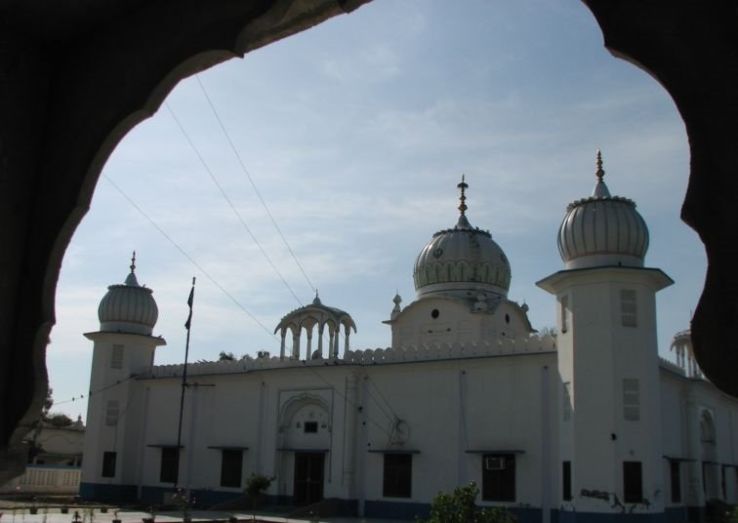
Situated 15 km off Bhatinda, the Lakhi Jungle is a forest shelters an ancient Gurdwara where Shri Guru Nanak Dev delivered Shri Japuli Sahibs or one lakh which is one hundred thousand holy sermons, which is where the name Lakhi comes from. The 10th Sikh Guru, Guru Gobind Singh has also marked the holy place with his visit.

Located 29 km from Bhatinda on the Bhatinda- Mansa Road, the Maiser Khana Temple is an important place for the followers of Hinduism. It was built to honor Jwalaji and the goddess Durga. People generally visit this area when two melas or fairs are held. Not only Hindu devotees, but alo Sikh devotees make a beeline to the temple during the fairs.
In the next post, we will visit two more cities in Punjab!

